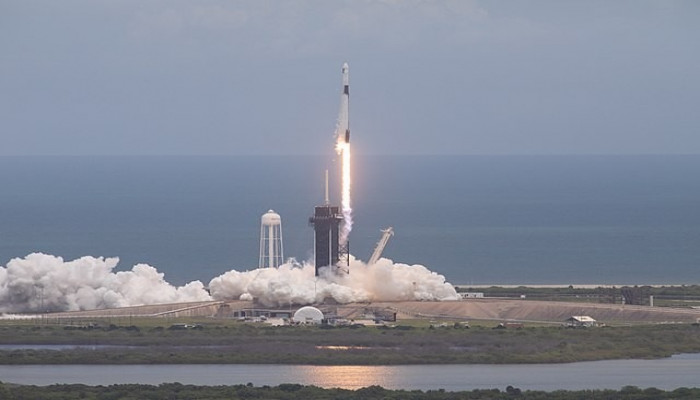Elon Musk's SpaceX Falcon 9 rocket has torn a new hole in the Earth's ionosphere
- In Reports
- 07:03 PM, Jul 24, 2023
- Myind Staff
According to a report on SpaceWeather, a recent rocket launch conducted by Elon Musk's SpaceX caused a temporary disruption in the ionosphere surrounding Earth. The specific rocket responsible for this event was the Falcon 9, known for its reusable two-stage design, enabling efficient transportation of payloads and crew into Earth's orbit and beyond.
The launch occurred on July 19 at the Vandenberg Space Force Base in California. Notably, SpaceX takes pride in the Falcon 9, claiming it to be the world's first orbital-class reusable rocket, with an impressive track record of 240 launches and 198 successful landings.
During the launch, photos captured a faint red glow that captured the attention of space physicist Jeff Baumgardner from Boston University. Upon studying the launch footage, he concluded that this red glow indicated the occurrence of a temporary hole in the ionosphere.
The ionosphere, a region of Earth's upper atmosphere, plays a crucial role in various communication and navigation systems. Temporary disruptions in this region can have implications for radio signals and other communications technologies, making this observation noteworthy for researchers and space enthusiasts alike.
As per reports, further analysis and investigation are likely to be carried out by experts to understand the extent and implications of the ionospheric disruption caused by the Falcon 9 launch. SpaceX's continuous commitment to innovative space transportation, combined with the scientific insights drawn from such events, contributes to the advancement of space exploration and technology.
“This is a well-studied phenomenon when rockets are burning their engines 200 to 300 km above Earth’s surface,” said Baumgardner.
“I reviewed footage from the July 19th launch. It shows the second stage engine burning at 286 km near the F-region peak for that time of day. So, it is quite possible that an ionospheric ‘hole’ was made,” he added.
According to space physicist Jeff Baumgardner, occurrences of rockets causing temporary disruptions in the ionosphere are not entirely uncommon, especially when their engines burn at altitudes between 200 to 300 km above Earth's surface. The recent incident involving SpaceX's Falcon 9 is an example of such an event. During the launch, the second stage engine of the Falcon 9 burned at approximately 286 km near the F-region peak, making it highly probable that an ionospheric "hole" was formed.
The ionosphere, situated at the edge of space, contains charged particles called ions and plays a vital role in generating geomagnetic storms. These storms produce dazzling auroras when solar plasma interacts with the ions present in the ionosphere.
Interestingly, this is not the first time such an incident has been observed with the Falcon 9 rocket. On a previous launch from the Vanderberg Space Force Base on August 24, 2017, during which the rocket carried the FORMOSAT-5 payload, it created shockwaves due to its vertical trajectory, resulting in the rupture of an ionospheric "hole" in the plasma. Similarly, a similar event took place during Falcon 9's launch on June 19, 2022, as reported by Science Times.
These observations highlight the significance of understanding and studying the impact of rocket launches on Earth's ionosphere, as they can have implications for communication and navigation systems that rely on ionospheric conditions. Furthermore, it offers valuable insights to researchers in the field of space science and exploration, contributing to advancements in our knowledge of the Earth's upper atmosphere.
Image source: Science Times







Comments